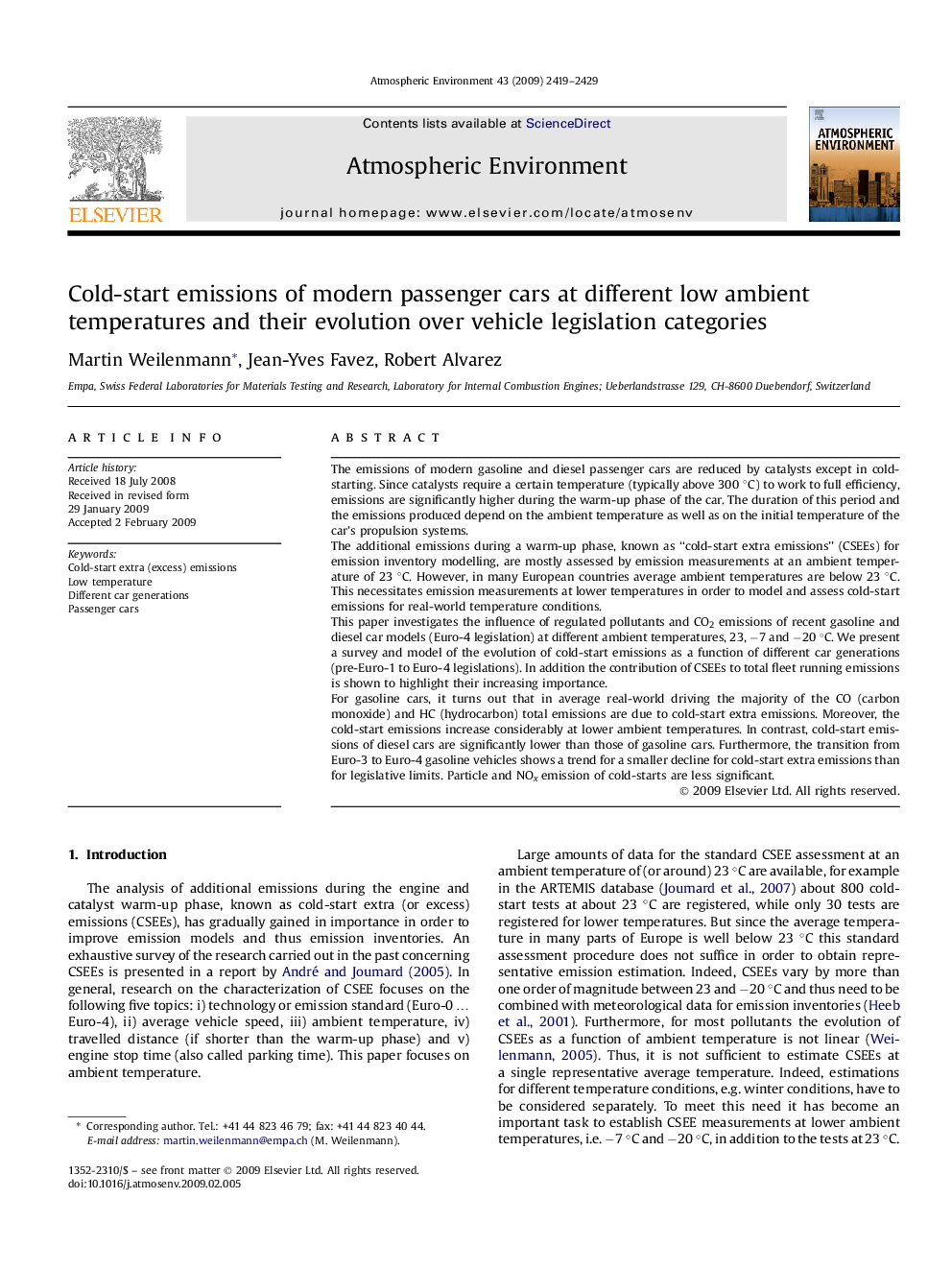| کد مقاله | کد نشریه | سال انتشار | مقاله انگلیسی | نسخه تمام متن |
|---|---|---|---|---|
| 4441896 | 1311128 | 2009 | 11 صفحه PDF | دانلود رایگان |

The emissions of modern gasoline and diesel passenger cars are reduced by catalysts except in cold-starting. Since catalysts require a certain temperature (typically above 300 °C) to work to full efficiency, emissions are significantly higher during the warm-up phase of the car. The duration of this period and the emissions produced depend on the ambient temperature as well as on the initial temperature of the car's propulsion systems.The additional emissions during a warm-up phase, known as “cold-start extra emissions” (CSEEs) for emission inventory modelling, are mostly assessed by emission measurements at an ambient temperature of 23 °C. However, in many European countries average ambient temperatures are below 23 °C. This necessitates emission measurements at lower temperatures in order to model and assess cold-start emissions for real-world temperature conditions.This paper investigates the influence of regulated pollutants and CO2 emissions of recent gasoline and diesel car models (Euro-4 legislation) at different ambient temperatures, 23, −7 and −20 °C. We present a survey and model of the evolution of cold-start emissions as a function of different car generations (pre-Euro-1 to Euro-4 legislations). In addition the contribution of CSEEs to total fleet running emissions is shown to highlight their increasing importance.For gasoline cars, it turns out that in average real-world driving the majority of the CO (carbon monoxide) and HC (hydrocarbon) total emissions are due to cold-start extra emissions. Moreover, the cold-start emissions increase considerably at lower ambient temperatures. In contrast, cold-start emissions of diesel cars are significantly lower than those of gasoline cars. Furthermore, the transition from Euro-3 to Euro-4 gasoline vehicles shows a trend for a smaller decline for cold-start extra emissions than for legislative limits. Particle and NOx emission of cold-starts are less significant.
Journal: Atmospheric Environment - Volume 43, Issue 15, May 2009, Pages 2419–2429